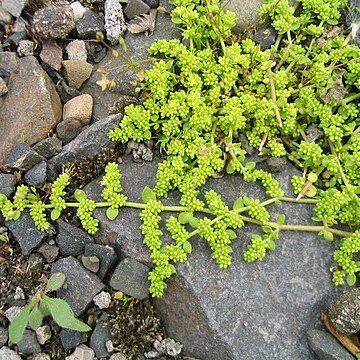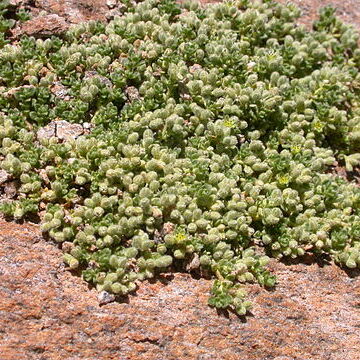Herbs annual or perennial. Stems diffuse or procumbent, much branched. Leaves alternate or opposite, sessile or shortly petiolate; leaf blade oblong, elliptic, or subcordate; stipules small, membranous, caducous. Inflorescence a small cyme or glomerule, sometimes reduced to a solitary flower, leaf-opposed or terminal; bracts small, membranous. Flowers 4-or 5-merous. Pedicel green, short or nearly absent, small. Sepals not aristate at apex, persistent. Petals very small or absent. Stamens as many as and shorter than sepals. Ovary obovoid, 1-locular with 1 to several ovules; style very short, apex 2-fid. Fruit a utricle, a membranous-walled achene enclosed within persistent sepals, irregularly dehiscent or indehiscent, usually 1-seeded. Seeds brown, ovoid or flat-orbicular; testa shiny.
Herbs, annual, rarely perennial, mat-forming, glabrous or hairy. Leaves opposite, or the upper pseudoalternate by abortion; lamina elliptic to oblanceolate; stipules silvery-scarious; bracts small, scarious. Flowers in dense axillary clusters, 4 (5)-merous, unisexual or bisexual. Sepals 5, free. Petals minute, subulate, white, often absent. Stamens 2–5. Ovary 1-celled, with 1 basal ovule; style 1, bifid above; stigmas capitate. Fruit an indehiscent achene enclosed by a persistent calyx. Seed 1, obovoid, smooth and glossy.
Much like Paronychia, but the stipules between adjacent lf-bases united to form a fringed scale about as broad as long; bracts inconspicuous; stigmas 2, short, virtually sessile. 35, Old World.


